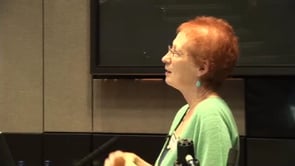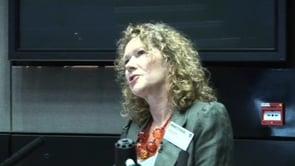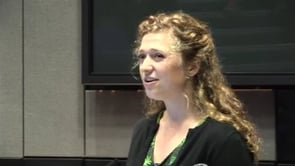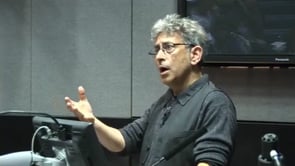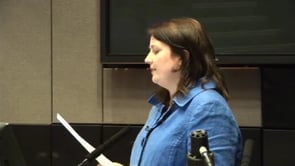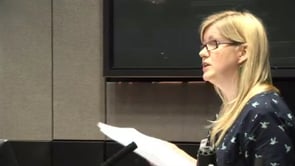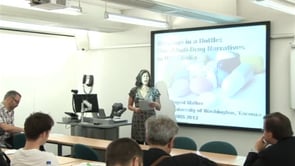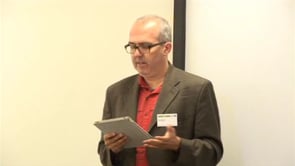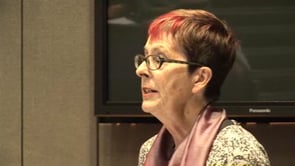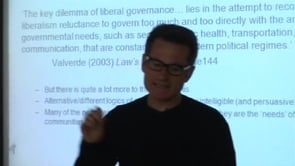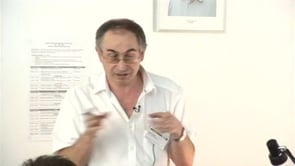-
About this event
“Under Control? Alcohol and Drug Regulation, Past and Present” conference was held at the London School of Hygiene and Tropical Medicine 21-23rd June 2013.
Under Control? was supported by the Alcohol Research UK; Bowling Green State University; the Alcohol and Drugs History Society, Brock University (Faculty of Applied Health Sciences); the Society for the Study of the History of Medicine; and the Centre for the History of Public Health at the London School of Hygiene and Tropical Medicine.
-
Event speakers
Click the speaker for more information:
Dr Adrian Barton
Dr Adrian Barton. Associate Professor, Public Policy and Management.Dr Adrian Barton. Associate Professor, Public Policy and Management. Adrian’s research interests are around the interface between health and crime policy with a particular interest in drugs and alcohol. Adrian has published widely in the drug and alcohol field including the very successful textbook Illicit Drugs: Use and Control. He has worked closely with bodies such as Devon and Cornwall Police; the Ministry of Justice; Cornwall County Council; Bro-Taf Council, Wales, as well as a number of service providers and community groups in both the statutory and voluntary sectors. In addition to working closely with academic bodies, Adrian has a deep commitment to practice and he has been a research consultant for Plymouth Hospitals NHS Trust, a research consultant for the prison advice and care trust and a rapporteur for the Belgian Government looking at alternative drug policies. He is also a member of the Board of Trustees at Harbour Drug and Alcohol, Plymouth.Virginia Berridge
Virginia Berridge is Professor of History and Director of the Centre for History in Public Health at the London School of Hygiene and Tropical Medicine, University of London.Virginia Berridge is Professor of History and Director of the Centre for History in Public Health at the London School of Hygiene and Tropical Medicine, University of London. She has published widely on the history of drugs,alcohol and tobacco and currently leads the work package on’ Addiction through the ages’ ,part of ALICE RAP, the EU’s Framework 7 programme on Addiction and lifestyles.’Steven Earnshaw
Steven Earnshaw is Professor of English Literature at Sheffield Hallam University.Steven Earnshaw is Professor of English Literature at Sheffield Hallam University. Publications include The Pub in Literature, Beginning Realism, The Direction of Literary Theory and Existentialism. He is the editor of The Handbook of Creative Writing.Dr John Foster
Dr John Foster is a Reader in Alcohol Policy and Mental Health Studies at the University of Greenwich.Dr John Foster is a Reader in Alcohol Policy and Mental Health Studies at the University of Greenwich. He was awarded his PhD thesis in 2001 which concerned quality of life in alcohol dependent individuals by Kings College London. His early work was focused upon treatment outcomes, however overtime his interests have been concentrated on alcohol policy and public health. His main contribution to data has been to formulate an explanatory model for home drinking in adults based upon cost, convenience and relaxation which also encompasses management of risk in adults and young people.Elizabeth Gabay
Elizabeth Gabay. Following a degree in history from the University of Leeds and a (short) career in publishing and theatre marketing, Elizabeth Gabay became an independent wine merchant, and wine educator.Elizabeth Gabay. Following a degree in history from the University of Leeds and a (short) career in publishing and theatre marketing, Elizabeth Gabay became an independent wine merchant, and wine educator. She became a Master of Wine in 1998. Since moving to south east France in 2002, she has continued her career in wine through writing, lecturing and teaching on the wines of Provence, Hungary and northern Italy for both consumer and business magazines, travel web sites, ‘Oz Clarke’s Pocket Guide’ and Jancis Robinson’s ‘World Atlas of Wine’. Concerning punch, a range of wine tastings themed around historic wines at the Sir John Soane Museum led to a commission to hold a series of punch talks and tastings at The Museum of London’s exhibition ‘London Eats Out’. From there curiosity concerning punch has developed into researching and writing a book on how punch has developed around the world, lectures and tastings of punch for the Georgian Group, the Sir John Soane Museum, the French Porcelain Society, judging the giant punch recipe competition held by Bompass and Parr, the Oxford Food Symposium (published in the proceedings for 2011) and is contributing to the forthcoming ‘Oxford Companion to Sweets’ on punch and mulled wine.Paul Gootenberg
Paul Gootenberg, SUNY Distinguished Professor of History and Sociology at Stony Brook University (New York) is a leading specialist on the history of drugs in Latin America and author of Andean Cocaine: The Making of a Global Drug (UNC Press, 2009).Paul Gootenberg, SUNY Distinguished Professor of History and Sociology at Stony Brook University (New York) is a leading specialist on the history of drugs in Latin America and author of Andean Cocaine: The Making of a Global Drug (UNC Press, 2009).John Greenaway
John Greenaway is Emeritus Professor of Politics in the School of Political, Social and International Studies at the University of East Anglia.John Greenaway is Emeritus Professor of Politics in the School of Political, Social and International Studies at the University of East Anglia. His research and publications are in the field of policy making in Britain and British political history. He has published on the politics of alcohol in Britain including Drink and British Politics since 1830(Palgrave Macmillan 2003). He has also researched and published on the politics of the 2003 English and Welsh Licensing Act including an article in British Politics 2011, vol.6. no.4.Christine Griffin
Christine Griffin is Professor of Social Psychology at the University of Bath in the Uk. Her recent work explores the relationship between identities and consumption for young people, with a long-standing interest in young women’s lives.Christine Griffin is Professor of Social Psychology at the University of Bath in the Uk. Her recent work explores the relationship between identities and consumption for young people, with a long-standing interest in young women’s lives. Recent ESRC-funded projects include a study of young people’s experiences of ‘branded’ leisure at music festivals and free parties led by Andrew Bengry-Howell; a project on clubbing and dance cultures as forms of social and political participation led by Sarah Riley; and a major study on the marketing of drinks in relation to young adults’ everyday drinking culture. Prof Griffin is currently Co-Investigator on a study of young adults’ drinking cultures and social media use in New Zealand (Marsden Fund: 2010-2013); and on the UK Centre for Tobacco and Alcohol Studies (MRC: 2013-2018), investigating the same topic in the British context.Thora Hands
Thora Hands holds a First Class Honours degree in Social Sciences and a Masters degree in Health History and is currently a Wellcome Trust funded PhD student at the Centre for the Social History of Health and Healthcare at the University of Strathclyde.Thora Hands holds a First Class Honours degree in Social Sciences and a Masters degree in Health History and is currently a Wellcome Trust funded PhD student at the Centre for the Social History of Health and Healthcare at the University of Strathclyde. Her thesis, ‘Reframing Drink and the Victorians: The consumption of alcohol in Britain 1869-1914’ explores the construction of the ‘respectable’ or ‘moderate’ drinker in the late Victorian period. The research intends to assess what impact social, cultural, political, medical and commercial factors had on the majority of alcohol consumers from 1869 to 1914.Dr Fiona Hutton
Dr Fiona Hutton is a senior lecturer in criminology at the Institute of Criminology, Victoria University, Wellington, New Zealand. Her research areas focus on young people, gender, drugs and alcohol.Dr Fiona Hutton is a senior lecturer in criminology at the Institute of Criminology, Victoria University, Wellington, New Zealand. Her research areas focus on young people, gender, drugs and alcohol. She is part of a research team examining ‘Facebook’ and young people’s drinking cultures. This presentation is based on some of the data gathered for this project and is supported by the Marsden Fund Council from Government funding, administered by the Royal Society of New Zealand (contract MAU0911).James Kneale
James Kneale is a cultural and historical geographer who is particularly interested in the historical and contemporary geographies of drink and drunkenness in the UK, US, and elsewhere.James Kneale is a cultural and historical geographer who is particularly interested in the historical and contemporary geographies of drink and drunkenness in the UK, US, and elsewhere. He has published on drinking places and the place of drink in society, and is currently conducting research on a book on temperance life assurance, which will examine the relationships between temperance, medicine, and insurance. In 2009 he contributed written and oral evidence to the House of Commons Health Select Committee, which was included in its 2010 report on alcohol.Alan Latham
Alan Latham is a senior lecturer at the Department of Geography, University College London.Alan Latham is a senior lecturer at the Department of Geography, University College London. He has a long standing interest in liquor licensing and its relationship both to public order and public health. He has also held positions at the University of Southampton and Auckland University.Dan Malleck
Dan Malleck is an Associate Professor of medical history in the Department of Community Health Sciences at Brock University, in Ontario, Canada.Dan Malleck is an Associate Professor of medical history in the Department of Community Health Sciences at Brock University, in Ontario, Canada. He is the editor-in-chief of The Social History of Alcohol and Drugs: An interdisciplinary journal, published by the Alcohol and Drugs History Society. His book, Try to Control Yourself: The regulation of public drinking in post-prohibition Ontario, 1927-1944 (UBC Press, 2012) won the Canadian Historical Association’s Clio Prize for best book on Ontario history for 2012. He is currently completing a book on the origins of Canada’s drug laws.Dr Annemarie McAllister
Dr Annemarie McAllister is Senior Research Fellow in History at the University of Central Lancashire, and a specialist in Temperance History, with particular reference to the Band of Hope.Dr Annemarie McAllister is Senior Research Fellow in History at the University of Central Lancashire, and a specialist in Temperance History, with particular reference to the Band of Hope. She directed the HLF-funded ‘Temperance and the Working Class’ Project which combined oral history and material culture collection to produce the ‘Demon Drink?’ exhibition in Manchester which had over 30,000 visitors, and thewww.demondrink.co.uk virtual exhibition. She is writing a monograph on the Band of Hope, the UK’s most successful Temperance organisation.Phil Mellows
Phil Mellows is a freelance journalist in the UK, specialising in alcohol policy and the pub industry.Phil Mellows is a freelance journalist in the UK, specialising in alcohol policy and the pub industry. He has been writing about pubs for nearly three decades, he is current chair of judges of the Great British Pub Awards while discussing alcohol policy in his blog, The Politics of Drinking. For updates follow him on Twitter @philmellows and for more information and examples of published work go to www.philmellows.comAmy Mittelman
Amy Mittelman is the author of Brewing Battles: A History of American Beer. She has a Ph.D. in American history from Columbia University.Amy Mittelman is the author of Brewing Battles: A History of American Beer. She has a Ph.D. in American history from Columbia University. She is also the author of numerous reference articles. Amy also has a B.S.N. in Nursing and has worked in the field of addiction detoxification, rehabilitation, and treatment.Dr Alex Mold
Dr Alex Mold is a lecturer in History at the Centre for History in Public Health, London School of Hygiene and Tropical Medicine.Dr Alex Mold is a lecturer in History at the Centre for History in Public Health, London School of Hygiene and Tropical Medicine. She has research interests in the history of illegal drugs, particularly the treatment of heroin addiction, the role of voluntary organsiations around illegal drugs and the development of the concept of addiction over time. She is part of the FP7 ALICE RAP project on re-framing addictions across Europe.Jacek Moskalewicz
acek Moskalewicz works as a Head of the Department of Studies on Alcoholism and Drug Dependence at the Institute of Psychiatry and Neurology in Warsaw, Poland.Jacek Moskalewicz works as a Head of the Department of Studies on Alcoholism and Drug Dependence at the Institute of Psychiatry and Neurology in Warsaw, Poland. Sociologist, for over 30 years involved in alcohol and drug research as well as in psychiatric studies incl. epidemiology, policy-oriented studies, action research, social history. Member of the World Health Organization experts’ advisory panel on drug dependence and alcohol problems. Consultant or technical adviser to international organizations including the WHO, EMCDDA, UNODC. Deputy-chairman of the Science Group of the Alcohol and Health Forum at the European Commission. Recipient of Jellinek Memorial Award (2001) and Chevalier Cross of Polonia Restituta (2004).Dr Stella Moss
Dr Stella Moss is a social and cultural historian of modern Britain at Royal Holloway, University of London.Dr Stella Moss is a social and cultural historian of modern Britain at Royal Holloway, University of London. Her current research focuses on drinking cultures in the early-to-mid twentieth century England, and she is writing a book on women’s drinking in pubs in the period from 1914-39.Dr James Nicholls
Dr James Nicholls is Research Manager at Alcohol Research UK and and Honorary Senior Lecturer at the London School of Hygiene and Tropical Medicine.Dr James Nicholls is Research Manager at Alcohol Research UK and and Honorary Senior Lecturer at the London School of Hygiene and Tropical Medicine. Dr Nicholls is author of The Politics of Alcohol: A History of the Drink Question in England, and has published widely on the history of drinking and addiction. In 2011-12, he completed a British Academy research fellowship on recent developments in British alcohol policy, and has previously completed a research fellowship investigating historical perspectives on local alcohol interventions for the Arts and Humanities Research Council.Richard Robinson
Richard Robinson is a PhD student in History at the University of Helsinki, Finland.Richard Robinson is a PhD student in History at the University of Helsinki, Finland. His doctoral thesis focuses on alcohol’s consumption, regulation and function in two seaside resort towns, Brighton (England) and Hanko (Finland), from the 1880s to the 1930s. Its underlying aim is to construct a picture of alcohol’s turbulent history at a local level in these two locations, while at the same time attempting to connect their drink-related discourses in a unique transnational comparison. Before starting his research in Finland, Richard gained an Upper Second Class BA (Hons) in History and Politics at the University of Warwick in 2007 and an MSc in Social and Cultural History at the University of Edinburgh in 2009.Lauren Elizabeth Saxton
Lauren Elizabeth Saxton is an ABD student at City University of New York’s Graduate Center.Lauren Elizabeth Saxton is an ABD student at City University of New York’s Graduate Center. Her research focuses on French medical knowledge regarding addiction in the late nineteenth and early twentieth centuries. In addition to writing her dissertation, she teaches undergraduate courses at City College and Lehman College, and works as a Writing Fellow at CUNY Law School.Lesley Smith
Dr. Robert Stephens
Dr. Robert Stephens is Associate Professor of History at Virginia Tech.Dr. Robert Stephens is Associate Professor of History at Virginia Tech. He also currently serves as the Principal of the Honors Residential College. He is an award�winning teacher, the past president of Virginia Tech’s prestigious Diggs community of scholars, and a member of the University Honors program. In 2007 he published his first book, Germans on DrugsIngrid Walker
Ingrid Walker is Associate Professor of Arts, Media, and Culture and American Studies in the School of Interdisciplinary Arts and Sciences at the University of Washington, Tacoma.Ingrid Walker is Associate Professor of Arts, Media, and Culture and American Studies in the School of Interdisciplinary Arts and Sciences at the University of Washington, Tacoma. Walker’s research focuses on 20th and 21st century United States’ culture, particularly the negotiation of identity as expressions of contested social dynamics and politics. Her current work is a study of U.S. discourses about substances and their users in the advertising, policy, medical professions, and popular culture. Specifically, the study examines the cultural norms created around legal and illegal drugs in the more than four decades of the U.S. “drug war.” Previous scholarship has focused on conspiracy theory as a political discourse in American popular culture as expressed in literature, television, film, comics, and ethnic texts featuring Italian-American mobsters, African-American gangstas, and white supremacism. In addition to cultural research, Walker has worked in various roles to further the study of teaching and learning at the university-level.Panagiotis Zestanakis
Panagiotis Zestanakis studied history at the Universities of Athens and Crete and gender studies at Utrecht University. SincePanagiotis Zestanakis studied history at the Universities of Athens and Crete and gender studies at Utrecht University. Since November 2010, he has been a PhD candidate in contemporary European history at the University of Crete. His research project entitled “Lifestyles, gender relations and social spaces in 1980s Athens” is funded by the Greek State Scholarship Foundation. His major research interests focus on the history of everyday life and changes on consumption habits, gender relations and the media landscape in post-dictatorship Greece. He is co-editor of the collective volume, ‘Speaking to/against certainties: genders, representations, subjectivities’, Athens, OMIK, 2013. Currently, he is a visiting researcher at the Autonomous University of Barcelona with a grant from LLP European Commission Programme. -
Videos from this event
Christine Griffin: Snap Star: Celebritising the self, young adults, social media, media, and the culture of intoxication Aotearoa, New Zealand
In this presentation Christine discusses innovative form of multi-modal discourse analysis (MMDA) to explore the ways in which various digital technologies and social media are integrated into young adults’ drinking cultures in Aotearoa New Zealand (Levine and Scollon, 2004). Drawing on material from a 3-year study on young adults’ alcohol consumption and social media use supported by the Marsden Fund, Christine explains how different groups of young adults
engage with the celebritising process in the context of the night-time economy.James Nicholls: What is the problem: Ideology, contingency, and evidence in recent UK alcohol policy
In his introduction to the 2012 Government Alcohol Strategy, the Prime Minister wrote that he would introduce minimum unit pricing to ‘tackle the scourge of violence caused by binge drinking’. Three years earlier, he had rejected the same policy on the grounds that it would punish moderate drinkers for the excesses of an irresponsible minority. Now it appears
minimum pricing may be dropped following a Cabinet revolt and a campaign by prominent trade associations. James discusses the paper which explores how policy dilemmas such as this reflect fundamental difficulties in defining alcohol as a political ‘problem’ – particularly, in recent years, between framing alcohol as an issue of health harms and / or antisocial behaviour.John Greenaway: A Perennially awkward issue: The Labour Party and alcohol
The UK Labour Party has found alcohol policy particularly difficult to fit into party ideology or programmes. By the end of the nineteenth century Labour was split three ways on the issue: prohibitionists and temperance enthusiasts who saw drink as a contributor to poverty and social distress; libertarians who saw temperance as a distraction from the class war; and enthusiasts for state control along lines of disinterested management. These divisions persisted until the 1930s. But the post-1945 period saw equally marked tensions: from debates about nationalisation of drink in the new towns, to issues on tied houses and monopoly, to policy on alcohol-related health issues. After 1997 ‘New Labour’ under Tony Blair liberalisation of alcohol sales represented part of an attempt to rebrand Labour as a modern party, no longer beholden to the ‘nanny state’ or old class-based politics. This backfired and he party seems not to have any coherent approach to such issues as minimum pricing or alcohol as a health issue. Part of the difficulty lies in the flexibility of the framing of alcohol policy. Is it a leisure, a trading, a health or a law and order policy issue?Lesley Smith: alcohol marketing and drinking behaviours
Alcohol marketing is a global industry, and in many countries alcoholic drinks are amongst the most heavily advertised products. Alcohol is promoted using various strategies including television, radio and print advertisements, point of sale promotions and product placement and portrayal of alcohol consumption in the broadcast and social media. An important
question, and matter of much debate, is the extent these promotional activities influence drinking behaviour of young people. Many studies have been published which inform this debate. The focus of this presentation is the findings from a systematic review updated with recently published studies. The aim of the review was to evaluate the relationship between exposure to alcohol advertising and marketing and subsequent drinking behaviour in young people. A systematic review of cohort (longitudinal) studies was conducted according to published guidelines. To date 16 ongitudinal studies have reported on the association between a range of above and below the line advertising and/or marketing exposure strategies. The data suggest that exposure to alcohol promotion strategies at baseline is
predictive of both uptake of drinking and increased frequency of drinking in young people.Lauren Saxton: Motherhood, drink and nation: the female alcoholic in national context
In 1849 Swedish physician Magnuss Huss coined the term “alcoholism.” Huss associated a wide variety of symptoms with this disease, with the result that everything from short-term drunkenness to chronic alcohol consumption could be considered a form of alcoholism. Despite this ambiguity, by 1880 public health officials throughout Europe felt comfortable
discussing alcoholism in the same way as cholera or tuberculosis, and asserted that the disease had been pathologically defined. Comparison between British and French discourses in this period, however, reveals that understandings of healthy and unhealthy alcohol consumption were tied to the specific settings in which public health officials developed and deployed them. A close reading of these discourses as they considered women and their consumption of
alcohol in Great Britain and France highlights the varying and often contradictory conclusions that emerged from national debates over drink and its possible evils. This paper will consider the distinct presentations of alcoholic women and treatment programs offered specifically for women in both national contexts in the pre-World War I era. It will highlight the ways in which concerns over population growth became tied up in discussions of alcoholism, and the
importance of gender in determining the line between acceptable and unacceptable consumption patterns.Phil Mellows: The dialectic of drink: Alcohol and the neoliberal state
How do we understand the often contradictory and incoherent twists and turns of government alcohol policy? Drink presents the state with a dilemma. Its role is to encourage industry, but the products of the drinks industry are problematic, seeming to threaten the health and order of the economy as a whole. The state negotiates a constantly shifting path through this conundrum. The neoliberal world that has developed over the past 40 years has brought with it a particular kind of state, and with it has emerged a peculiar kind of alcohol strategy, drawn from the orthodoxies of ‘new’ public health, but strangely in conflict with it. Phil discusses the paper, which explores those conflicts in the light of recent alcohol policy in the UK.Professor Paul Gootenberg Q & A Session
Professor Paul Gootenberg answers questions after his presentation on ‘Controlling cocaine: Policy ‘blowback’ and the hemispheric- historical origins of the Mexican Drug War, 1900-2000′Stella Moss: ‘Red biddy ruin’: Methylated spirit consumption and the control of deviant drinking in interwar Britain
This paper considers the phenomenon of methylated spirit consumption in Britain during the 1920s and 1930s. In the wake of claims about the increased prevalence of ‘meths’ consumption at this time, there emerged a range of moralised anxieties about deviant drinking, together with calls for the tighter regulation of meths sales to combat its use as an intoxicant. While the consumption of meths was not unknown in the era before World War One, the 1920s saw
growing concerns about the manufacture and consumption of ‘red biddy’, a highly potent mix of meths and cheap red wine or port. That meths consumption was thought to be increasing provoked numerous legislative and medico-moral investigations, at both local and national level. Much of the ensuing debate centred on questions of control, given that the existing licensing apparatus contained no regulatory provisions relating to the sale and consumption of
meths. With red biddy linked overwhelmingly to abject poverty and vagrancy, lobbying groups such as the Society for the Study of Inebriety focussed on the social and moral problems associated with meths drinking, together with the considerable medical dangers posed to the individual consumer. This paper casts fresh light on discourses about
consumption and deviance, and in moving beyond representations of drunkenness associated with more common types of alcohol, adds new depth to understandings of intoxication and its regulation in modern Britain.Thora Hands: Treating the mad, the bad and the drunk: Medical institutional responses to the problems of inebriety in Scotland c.1897-1914
The Inebriates Acts of 1879 and 1898 resulted in the introduction of institutional ‘solutions’ to the problems of drug and alcohol addiction in Britain. The concept of inebriety was deployed within voluntary and compulsory medical institutions in order to target and control the behaviour of individuals and social groups. This paper examines Scottish medical responses to the Inebriates Acts using case studies of the State Inebriate Reformatory at Perth, Invernith Lodge Retreat and the Chrichton Royal Asylum. These contrasting case studies reveal that institutional treatment reflected different medical and political interests rather than a specific inebriate reform agenda. In late Victorian and early Edwardian Scotland, the concept of inebriety was used to confine the mad, the bad and the drunk within institutions that provided
medical treatment and moral reform for deviant behaviour. This established a framework for medical and political intervention in substance use that has lasting implications for alcohol policy in present day Scotland.Annmarie McAllister: Risk as presented to children: Temperance teaching in Band of Hope
The focus of many current policy initiatives is to minimise risk to children, constructing them as vulnerable beings to be safeguarded. However, the material Annmarie explores in the paper, produced for children over a period of a hundred years, not only foregrounds and focuses upon risk as a constant presence in everyday life, but in many cases actively encourages children to seek it out and intervene.Ingrid Walker: Message in a bottle: Pro- and anti-drug narratives in contemporary US media
In the late 1990’s, a transition to less regulated direct-to-consumer pharmaceutical marketing in the United States paralleled an intensification of the federal anti-drug effort through Congress’s call for a media campaign directly targeting youth and parents. With other popular culture narratives, this advertising has deeply informed American cultural norms about drug use in the twenty-first century. The resulting tension between a pro-pharmaceutical drug market and anti-illicit drug criminal justice system represents broader social conflicts about drugs and health, user agency, substance efficacy, controlled use, and addiction. Through contemporary drug narratives, this talk will address questions of individual agency within a culture of medicalisation of substance use. It will explore how an emphasis on individual health and medical supervision to regulate our bodies have become effective discourses of social power that we internalise and practice–what Michel Foucault theorised as “technologies of the self.” Questions related to what Nancy Campbell calls “problem-solving and problem creating drugs” will be explored. Is there a difference between taking a drug to avoid depression and taking a drug to feel good? What are the bases for relevant critical distinctions with regard to licit and illicit substance use and consciousness? And can they be found within a medical model that strongly shapes cultural norms regarding drugs and psychoactive substances, especially in terms of how we conceptualise, discuss, regulate, and research them?Dan Malleck: Habitual risk: Insurance, professional authority and the medicalization of addiction in the 19th century
In his influential textbooks on medical jurisprudence, Alfred Swaine Taylor observed that the opium habit, while generally a personal vice, was viewed by the emerging life insurance/assurance industry as a risky behaviour that might preclude an individual obtaining life insurance coverage. Taylor and others, such as the equally influential Robert Christison, debated in the pages of their books, the truth of this statement: whether opium habit limited life spans, and should be considered by the medical profession as something more than a personal problem, however iatrogenic it may be. When examining the medicalization of addiction, historians have tended to look to two sources for epistemological
roots: medical science and the law. Yet neither of these forms of knowledge is removed from other social, political and economic influences. Like many professionals establishing both their authority and their financial viability, physicians were drawn to the insurance industry as a source of investment to secure their financial future. They were also wooed by the industry, since a medical doctor’s certificate was useful, and eventually required, to guarantee that the
applicant for insurance was healthy enough that insuring them did not pose an undue risk to the company and its investors. By the end of the century, many insurance companies were hiring physicians to manage corporate divisions dedicated to assessing risk, physician groups were setting prices for the medical exam (paid for by the insurance company) and medical literature on a range of illnesses often included commentary on how that illness might affect
the patient’s ability to obtain insurance. This paper looks at how the symbiotic but often fraught relationship between physicians and insurance companies affected the idea of habit as a medical condition. It uses the example of Canadian medical literature, highly influenced by both British and American developments in medical science and medical professionalization, to explore the intricacies of this relationship and whether and how life insurance affected
medical ideas. It posits that historians need to pay attention to the influence of private industry which, even if not directly involved in the practice of medicine (such as the pharmaceutical industry), may have had considerable impact on the development of a disease theory of addiction.James Kneale: Moderate drinking before the unit: Medicine and life assurance in Britain and the US c. 1860-1930
Moderate drinking ceased to be the main goal of the British temperance movement by the 1850s, but the idea of moderation continued to animate discussions here and elsewhere. This was partly the result of ongoing medical research and argument, but it may also have reflected the way these ideas travelled to unfamiliar places – including life assurance offices. A number of different strategies for separating moderate from excessive drinkers emerged from the dialogue between medicine and life assurance, from the teetotal insurance office that ended up giving policies to moderate drinkers to the use of a fixed daily limit by US firms in the early twentieth century. While these ideas of moderation seem to have disappeared into the background for much of the twentieth century, re-emerging as the ‘J-shaped’ curve of today,
these early developments anticipate many of the questions surrounding uses of the ‘unit’ in Britain today: was moderate drinking safe, or simply safer? How did moderation ‘work’ for rival experts, forms of knowledge and types of evidence? And what happened when limits were set by complex networks of actors with different goals?Virginia Berridge: History and Horizon Scanning: What does the future hold for drugs, alcohol and tobacco?
Virginia Berridge discusses our attitudes to alcohol, tobacco and drugs. How, she asks, are our views on these substances defined, and why do they change? Does popular culture or regulation create our attitudes, and how do those things interact?Steve Earnshaw: Drink dissolution: antibiography
Through many centuries there has been an abiding idea that alcohol and dissolution are natural bedfellows, and to give one’s self over to drink is in effect to temporarily cast off the everyday self. Most return to habitual modes of being the following day and restore themselves to personal and social narratives, to biography and autobiography. Van Gogh’s
painting from 1888 offers the view that we are beset by the possibility of eternal dissolution, that at nighttime we might lose our coherent selves for good. One persistent understanding of the power of alcohol is release from the burden of a coherent self. Alcohol is antibiography. Don Paterson’s poem ‘The Ferryman’s Arms’ (1993) similarly locates the dissolution of identity within a public house. Here, ‘drawn, like a moth, to the darkened back room’ he plays himself
at pool. The self that wins walks out of the pub, leaving behind the ‘losing opponent’ self sullenly / knocking the balls in, for practice, for next time’. The poem sets the scene for a collection entitled Nil Nil and prepares the reader to accept the fissiparous power of alcohol as prequel to a self that will become nothing. The paper will meditate on these and other
examples of writers and artists who yoke self, social space and alcohol together, using drink to dissolve biography.Robert Stephens: Projecting the truth about addiction
Cinema and modern conceptions of drug addiction emerged nearly simultaneously in the late- 19th century. And since the turn of the twentieth century, the visual imaginary of drug addition has had a powerful effect on popular conceptions of drug addiction and public policy. My paper, which grows out of a book-length study of drug addiction in the media, will
focus on the complicated ways in which commercial imperatives, government intervention, industry self-censorship, and changing consumption habits have worked together to define drug addiction as specific set of cultural narratives that bear little resemblance to either changing scientific theories or some kind of tangible, sociological reality. Throughout the
twentieth century and into the twenty-first, the visual representation of drug addiction has been a constant bone of contention. The common concern that has driven much of this debate has been the fear that the mere appearance of drug consumption on film would lead youth down the path to addiction, that it would spark a curiosity that could not be extinguished. This paper will trace the debates over the visibility of addiction since the renewed “War on
Drugs” in the 1980s, focusing on the ways that visible narratives shaped public policy by obfuscating changes in drug use patterns and new scientific insights into addiction.Adrian Barton: ‘I don’t really like the pub’: Reflections on young people and pre-loading alcohol.
Recent research (Barton and Husk 2012) suggested that in the United Kingdom (UK) we are seeing a shift from the traditional ‘pub-club’ drinking pattern to a ‘home-pub-club’ pattern. In the latter model often excessive early evening drinking is occurring in the private sphere in the absence of external control, leading to problems when the drinkers enter the public sphere. Adrian discusses pre-loading as a key aspect in the drinking patterns of many of the Night Time Economy (NTE).Alan Latham: The common sense spatiality’s of liquor licensing: Regulating alcohol in New Zealand and the 1989 Sale of Liquor Act
In August 1989 the New Zealand Parliament passed into law the Sale of Liquor Act (1989). Far reaching in its intent, the Act’s supporters claimed that it would modernise New Zealand’s approach to alcohol, and the licensing of its sale. Released from the accumulation of over a century of often eccentric and frankly bizarre regulation, New Zealanders were to be returned to the normal society of drinkers. Those opposed to the Act saw things differently. New Zealand was caught up in a dangerous and ill thought-out experiment. New Zealand was not like the rest of the world. To let New Zealanders loose in a society where alcohol was widely available was to invite moral and medical perdition. The paper Alan discusses, examines the complex of spatio-temporalities that played into the making of the 1989 Sale of Liquor Act, and the regime of licensing that it established. Tracing out the debates around the Act, and its subsequent implementation, one encounters populations of French drinkers caught in the slow but inevitable grip of liver cirrhosis, a substance ethanol which put together with a whole range of other materials like food or chairs and humans, may or may not combine to make a temporarily erratic, irrational, and thus dangerous entities, American drivers aggregated in tables of ‘drunk driver’ related deaths, supermarket liquor aisles tempting suburban house wives into spontaneous purchases, to name just a few examples. The presentation outlines the common sense spatializations that organised the debate around reforming liquor licensing in New Zealand, and how these common sense spatializations create quite fantastical landscapes.Amy Mittelman: Creating bourbon distillers and the federal government 1862-1963
Amy talks about her paper, which explores the evolution of bourbon whiskey into a niche elite product.Elizabeth Gabay: How did punch survive the impact of the Gin Acts 1729-1751…
Between 1729 and 1751 Parliament passed a series of Acts raising the duty payable on cheap spirits in an attempt to control excessive gin consumption. The 1736 Act in particular sparked impassioned debate concerning alcoholic consumption. Health, crime and the financial importance of the Sugar Colonies were all issues raised. ‘Mother’s Ruin’ (gin), the drink of the urban poor and associated with crime, eventually declined in popularity. Punch, made with
the more expensive brandy, arrack and occasionally rum, was drunk by all classes and an ‘inspiration’ towards debate and conversation. Punch was also the subject of moral condemnation as seen in Hogarth’s ‘Modern Midnight Conversation’ (1732-33) which shows the drunken effects of consuming several bowls of punch. Using the evidence of debates, letters and recipes, I will show how the impact of moral judgement, stirred by the Gin Acts, led to the style of punch evolving during the eighteenth century, from the undiluted drink of the early 1700s, to the classic punch with a ratio of one measure of spirits to four or five measures of weak (water, milk or tea). In the early nineteenth century, gin resurfaced as a fashionable ingredient in punch.Jacek Moskalewicz: The changing meaning of addiction in Polish medical journals in the late 19th and early 20th century
Jacek Moskalewicz discusses a paper, which presents results of a study on the history of addiction carried out within the
framework of the ALICE RAP project with the participation of researchers from Austria, Italy, Poland and the UK. This paper is restricted to the Polish historical experience and its aim is to follow changing meanings of addiction in the Polish medical journals from 1860 until 1930.John Foster: Drinking away from licensed premises (mostly at home): The link between risk and time
The United Kingdom has witnessed a steady rise in per capita alcohol consumption; much of this has been fuelled by drinking away from licensed premises. The aim of the presentation is to analyse ways in which drinkers who drink away from licensed premises bring temporal considerations of risk into play, and determine/ describe any risks to be associated with drinking.Panagiotis Zestanakis: Drug addiction and geographies of leisure in 1980s Athens. An interactive relation…
Panagiotis discusses the increase in drug usage in 1980s Athens after restoration of democracy in 1974 and Western Europe’s cultural influence on Greece.Richard Robinson: High Spirits: The impact of tourists on alcohol’s history in Brighton and Hanko
Richard talks about the history of a drinking culture in tourist destinations, such as Brighton in the UK and Hanko in Finland. He compares two of them and discusses the paradox integral to the towns identity.Virginia Berridge: Addiction through the ages
The paper Virginia discusses surveys the historiography of addiction and the current state of play in historical writing about addiction, primarily to alcohol and drugs, but also tobacco. It reports on the initial findings of a cross-national historical study of concepts being carried out as part of the FP7 ALICE RAP programme. Here cross-national comparison of concepts in the period 1860-1930 shows how many concepts applicable to habitual use of drink and drugs were emergent in these years. The research shows that there were significant differences between the concepts used in different European countries and among the professional and scientific interests which promoted them. The paper concludes that the Anglo American tradition of ‘addiction history’ may have been over dominant and that we need to be more aware of European differences.Alex Mold: From inebriety to addiction: terminology and concepts in the UK 1860-1930
Alex discusses a paper which explores how addiction terminology was used in medical publications in Britain between 1860 and 1930 by exploiting the possibilities of digitised resources. Specifically, it identified differences in the use of concepts over time and between sources.Professor Paul Gootenberg: Controlling cocaine: Policy ‘blowback’ and the hemispheric- historical origins of the Mexican Drug War, 1900-2000
Illuminating a hidden and fascinating chapter in the history of globalization, Paul Gootenberg chronicles the rise of one of the most spectacular and now illegal Latin American exports: cocaine. Gootenberg traces cocaine’s history from its origins as a medical commodity in the nineteenth century to its repression during the early twentieth century and its dramatic reemergence as an illicit good after World War II. Connecting the story of the drug’s transformations is a host of people, products, and processes: Sigmund Freud, Coca-Cola, and Pablo Escobar all make appearances, exemplifying the global influences that have shaped the history of cocaine. But Gootenberg decenters the familiar story to uncover the roles played by hitherto obscure but vital Andean actors as well – for example, the Peruvian pharmacist who developed the techniques for refining cocaine on an industrial scale and the creators of the original drug-smuggling networks that decades later would be taken over by Colombian traffickers. -
Document/Links from this event
Contributor Sample View All
Ken McLaughlin
Manchester Metropolitan University
Sarah Galvani
Manchester Metropolitan University
David Best
Melbourne, Australia and UK
Virginia Berridge
London School of Hygiene and Tropical Medicine
Joy Barlow
Glasgow
James Nicholls
Alcohol Research UK
Alasdair Forsyth
Glasgow
Stephen Rollnick
Cardiff University
Keith Humphreys
Stanford University
Betsy Thom
Middlesex University
Ruth Runciman
UK
Elizabeth Ettorre
Liverpool
Michael Gossop
London
Fergus McNeill
University of Glasgow
John Davies
Strathclyde
Julia Buxton
Bradford University
Thomas McLellan
London
John Strang
London
Nick Heather
Northumbria University
Paul Hayes
London
Rowdy Yates
Manchester
Kamlesh Patel
London
Griffith Edwards
William White
USA
Toby Seddon
Manchester
Neil McKeganey
Glasgow
Annette Dale-Perera
National Treatment Agency
Susanne MacGregor
London, UK
Howard Parker
Liverpool, UK
Mike McCarron
Scotland
Robin Davidson
Belfast
Mike Ashton
London, UK
Ian Wardle
Manchester
Jim McCambridge
London
Rhoda Emlyn-Jones
Cardiff
Lifeline Project & FEAD Read more
Welcome to Lifeline and FEAD (Film Exchange on Alcohol and Drugs). This project has been shaped by the wealth of experience, openness, and knowledge of the contributors. You are invited to comment on the clips, which are supported by footnotes to which you can add. FEAD is an ongoing Lifeline Project initiative.
Lifeline Project: In 1971 the Lifeline Project opened a day centre for drug users in Manchester. Since its foundation Lifeline has grown and developed, and now works in a diverse range of settings across the UK. Our purpose is to relieve poverty, sickness and distress among those persons affected by addiction to drugs of any kind, and to educate the public on matters relating to drug misuse.
Explore FEAD
Recent Contributors
Get FEAD email updates
Sign up to our mailing list to be informed of new content whhen it happens.
